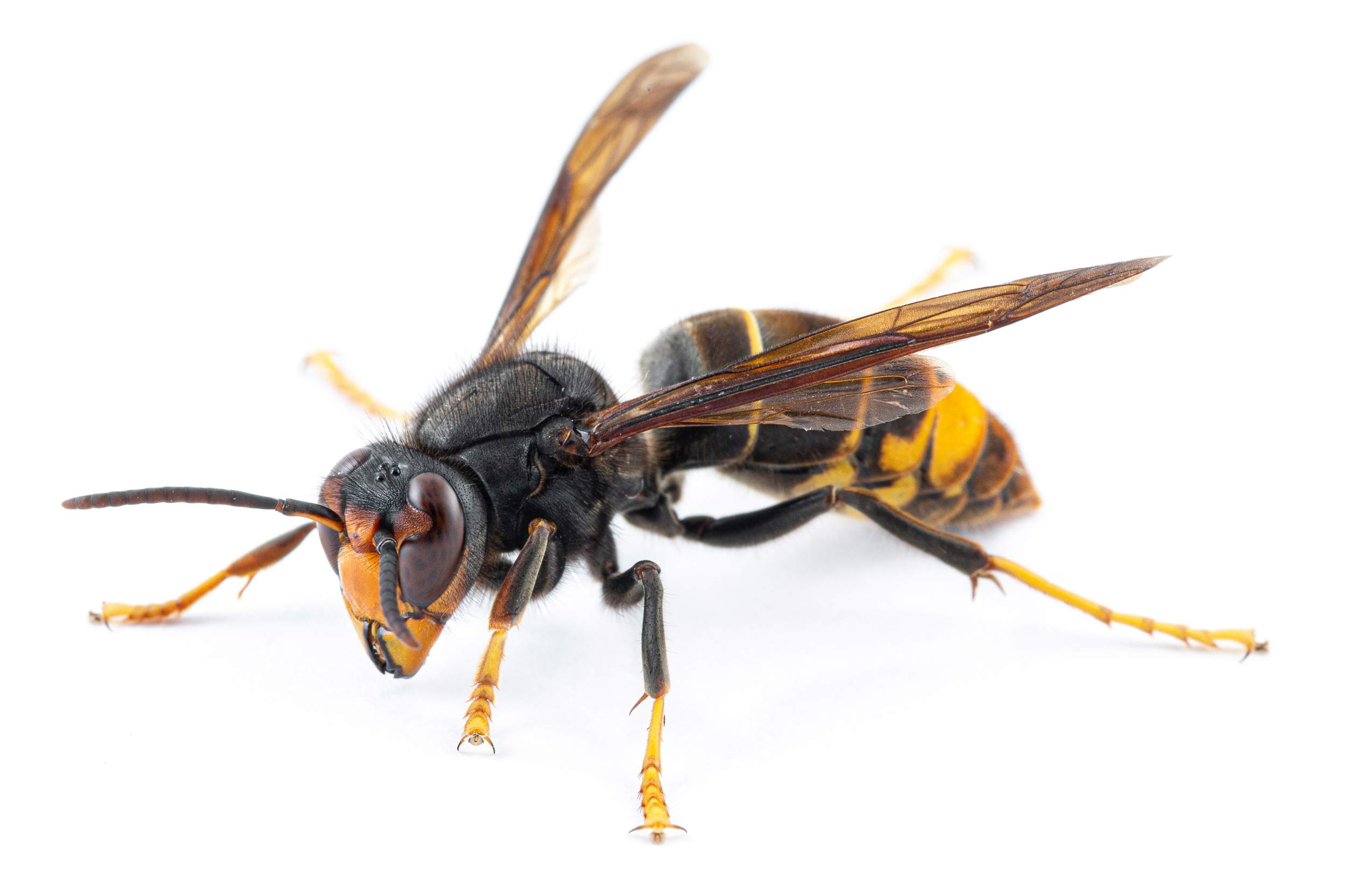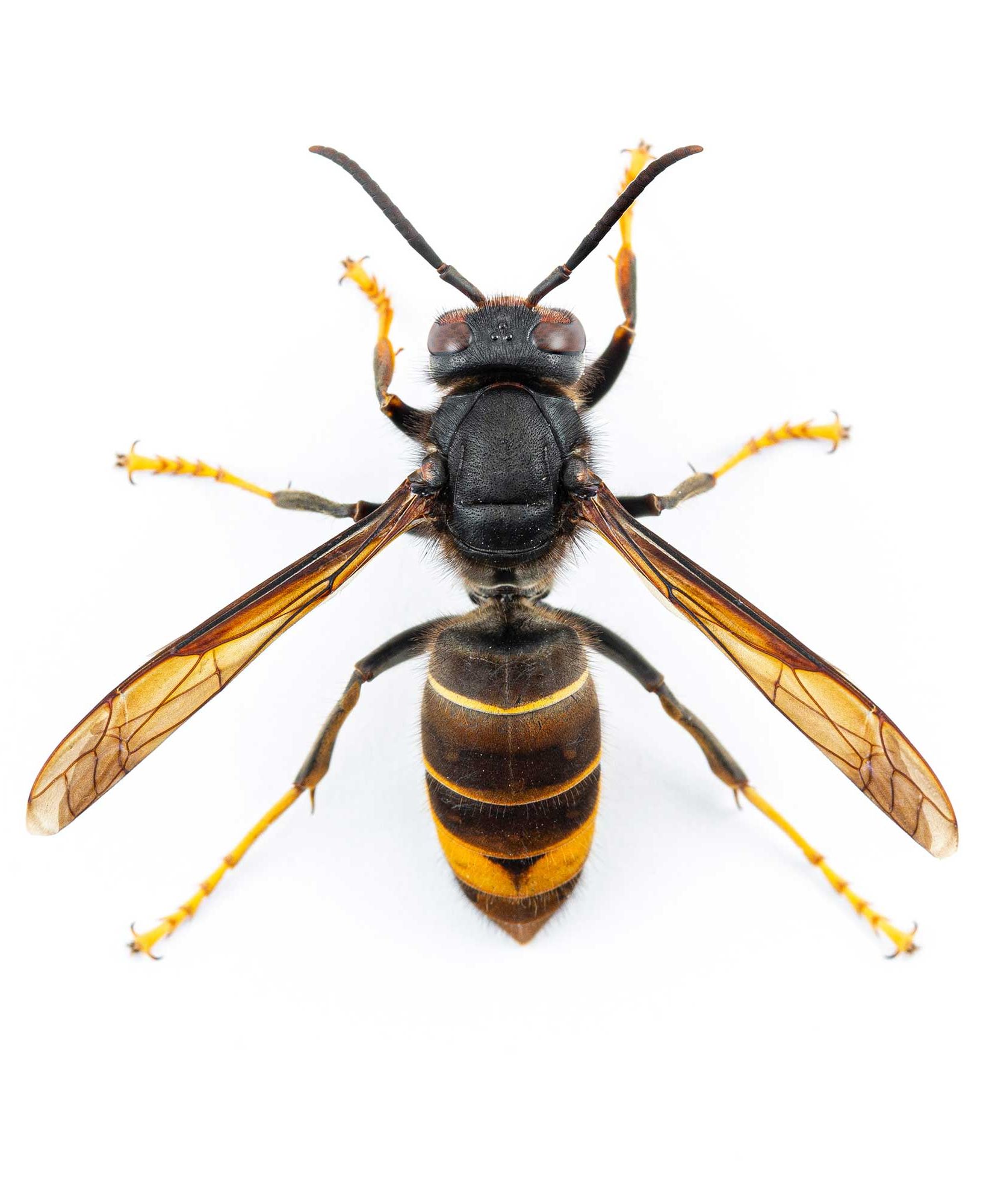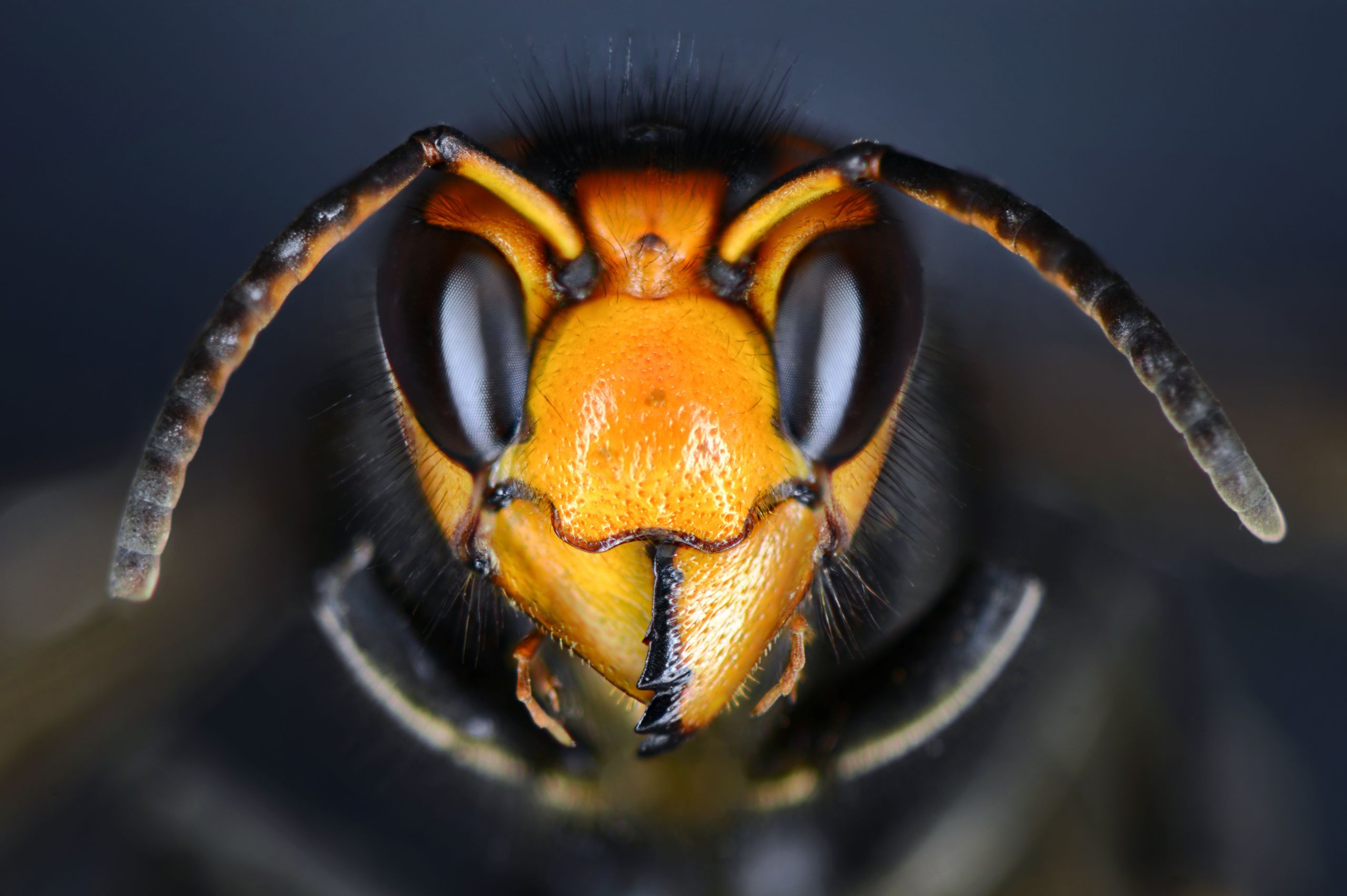Asian Hornets
Asian Hornets
The Asian hornet or yellow legged hornet (Vespa velutina) is an invasive species that poses a threat to native pollinators and biodiversity across Europe. This site provides information on its identification, behaviour, spread, and control efforts.
The Asian hornet or yellow legged hornet (Vespa velutina) is an invasive species that poses a threat to native pollinators and biodiversity across Europe. This site provides information on its identification, behaviour, spread, and control efforts.

Asian Hornets
Vespa velutina nigrithorax
Asian hornets (Vespa velutina) are an invasive predatory species posing a serious threat to native biodiversity, particularly honeybees and other vital pollinators. Originally from Southeast Asia, these hornets have rapidly spread across parts of Europe, including the Channel Islands and mainland UK, disrupting ecosystems and affecting agriculture.
This website is dedicated to raising awareness, sharing practical guidance about Asian hornets. Whether you’re a beekeeper, conservationist, or simply concerned about your environment, you’ll find up-to-date resources, identification tips, and ways to get involved in protecting local wildlife.
Together, we can help stop the spread and safeguard our natural ecosystems.
Asian Hornets – Primary Nests
The primary nest of the Asian hornet (Vespa velutina) is the first nest built by a queen in early spring, typically from March to May. It is usually small, about the size of a tennis ball when first constructed, and is often hidden in sheltered locations such as sheds, roof spaces, porches, or dense shrubbery. These nests are made of chewed wood fibers, giving them a papery appearance. The primary nest serves as the initial base for the colony, where the queen raises the first generation of worker hornets. As the colony grows, they often abandon the primary nest and build a larger secondary nest, typically higher up in trees or buildings. Detecting and destroying primary nests early in the season is one method of controlling the spread of this invasive species.
Secondary Nests
The secondary nest of the Asian hornet is the colony’s main nest, constructed once the initial generation of workers has developed. These nests are typically built from late spring into the summer and can grow to considerable sizes, sometimes exceeding 60cm in diameter. They are most commonly found high up in trees but may also be located on buildings, under eaves, or in other elevated, sheltered areas. Constructed from layers of chewed wood pulp, the nest has a papery texture and often takes on a rounded or teardrop shape, with a single entrance usually positioned at the bottom. By late summer, a mature secondary nest can house several thousand hornets. These nests are more difficult to detect due to their height and natural camouflage, posing a significant challenge for monitoring and control efforts.
The secondary nest of the Asian hornet is the colony’s main nest, constructed once the initial generation of workers has developed. These nests are typically built from late spring into the summer and can grow to considerable sizes, sometimes exceeding 60cm in diameter. They are most commonly found high up in trees but may also be located on buildings, under eaves, or in other elevated, sheltered areas. Constructed from layers of chewed wood pulp, the nest has a papery texture and often takes on a rounded or teardrop shape, with a single entrance usually positioned at the bottom. By late summer, a mature secondary nest can house several thousand hornets. These nests are more difficult to detect due to their height and natural camouflage, posing a significant challenge for monitoring and control efforts.
Multiple Dangers of Asian Hornets
Asian hornets pose a serious threat to wildlife, especially honeybees and other pollinators. They prey heavily on bees, weakening colonies and harming local ecosystems. While not usually aggressive to humans, they can become dangerous if their nest is disturbed, delivering painful stings and posing a risk to those with allergies.

Trapping Asian Hornets
Trapping is a valuable tool in the early detection and control of Asian hornets (Vespa velutina), particularly during the spring when queens emerge from hibernation. Carefully placed traps can also help reduce worker populations later in the season between June and November. It’s important to use selective, bycatch-friendly Asian hornet traps that minimise the capture of non-target insects such as bees and other precious pollinators.
Asian Hornets – Identification
Asian hornets are often confused with native European hornets (Vespa crabro), but there are several distinctive features to help tell them apart:
-
Size: Workers are typically 20–25 mm long; queens can reach up to 30 mm.
-
Colour: Dark brown or velvety black thorax with a fine yellow band.
-
Abdomen: The fourth abdominal segment has a prominent orange/yellow band.
-
Face: Orange face with dark eyes.
-
Legs: Yellow tips on the lower legs (a key identifying feature).
-
Flight: Fast, agile, and often erratic when hunting.
For accurate identification, photos and location details should be sent to relevant local authorities or via reporting apps like the Asian Hornet Watch app.

